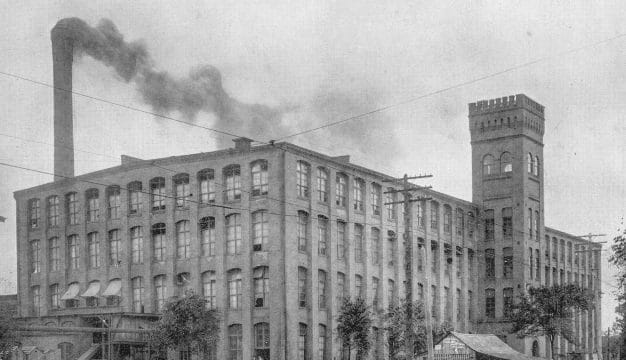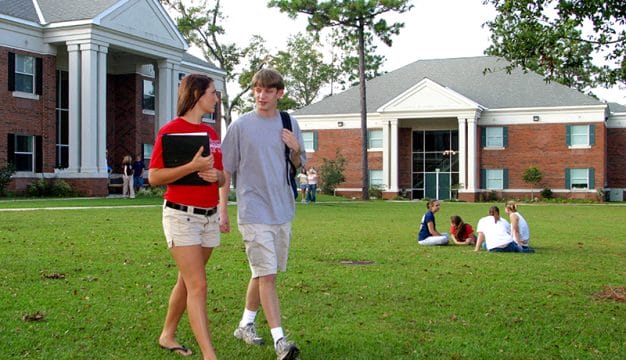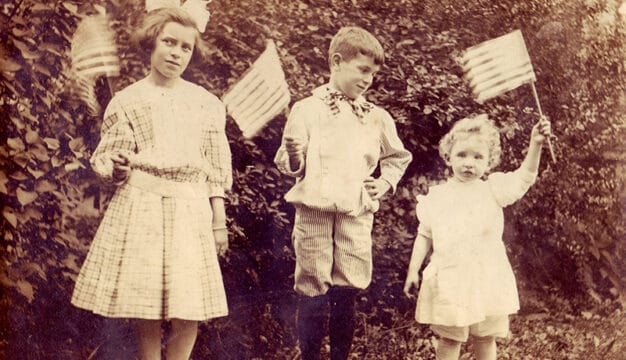University of North Alabama
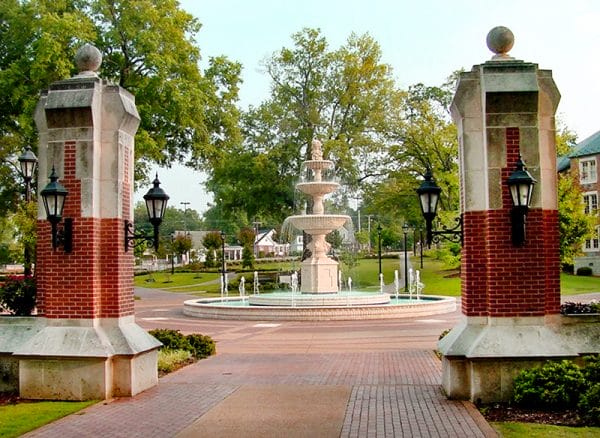 University of North Alabama
The University of North Alabama (UNA) is located in Florence, Lauderdale County. Founded as LaGrange College near Leighton, in 1830, it was the first state-chartered college in Alabama. Originally established by the Methodist Church, the school became a state-run institution in 1870. The school has been located in Florence since 1855 and has been known as the University of North Alabama since 1974. UNA currently offers more than 60 undergraduate majors and seven graduate programs in four colleges: the College of Arts and Sciences, the College of Business, the College of Education, and the College of Nursing and Allied Health. The university earned a top-tier ranking in U.S. News and World Report’s list of America’s best colleges in 2008. Notable alumni include Pulitzer Prize-winning author T. S. Stribling, politician, Edward Berton Almon, several members of the Drive-By Truckers band, and actor George Lindsey.
University of North Alabama
The University of North Alabama (UNA) is located in Florence, Lauderdale County. Founded as LaGrange College near Leighton, in 1830, it was the first state-chartered college in Alabama. Originally established by the Methodist Church, the school became a state-run institution in 1870. The school has been located in Florence since 1855 and has been known as the University of North Alabama since 1974. UNA currently offers more than 60 undergraduate majors and seven graduate programs in four colleges: the College of Arts and Sciences, the College of Business, the College of Education, and the College of Nursing and Allied Health. The university earned a top-tier ranking in U.S. News and World Report’s list of America’s best colleges in 2008. Notable alumni include Pulitzer Prize-winning author T. S. Stribling, politician, Edward Berton Almon, several members of the Drive-By Truckers band, and actor George Lindsey.
 Florence State Teachers College (UNA)
LaGrange College was established on January 11, 1830, in Leighton, Lauderdale County, by the Tennessee and Mississippi Conferences of the Methodist Church. Although the founders were deeply religious, they determined that the college curriculum would be nondenominational and focus on literary and scientific, rather than theological, instruction. The college opened with 70 male students and three faculty members under the supervision of Reverend Robert Paine as its first president. In 1846, LaGrange College’s second president, Edward Wadsworth, began his term and oversaw the initiation of a scholarship fundraising program; by 1849, enrollment had exceeded 100 students. James W. Hardy became president in 1852 and served until his sudden death in 1853; he was succeeded by Richard Henderson Rivers in 1854. Not long after his promotion to the presidency, the Session of Alabama and Memphis Annual Conference voted to move LaGrange College to Florence for financial and logistic reasons. The move took place in January 1855, and although the new location was no more than 15 miles away, it took three days to complete the move by way of a caravan. The new site consisted of several large tents until buildings could be constructed. Both the original and new school sites operated under the name LaGrange College for nearly a year, but by 1856, the Florence campus had been renamed Florence Wesleyan University.
Florence State Teachers College (UNA)
LaGrange College was established on January 11, 1830, in Leighton, Lauderdale County, by the Tennessee and Mississippi Conferences of the Methodist Church. Although the founders were deeply religious, they determined that the college curriculum would be nondenominational and focus on literary and scientific, rather than theological, instruction. The college opened with 70 male students and three faculty members under the supervision of Reverend Robert Paine as its first president. In 1846, LaGrange College’s second president, Edward Wadsworth, began his term and oversaw the initiation of a scholarship fundraising program; by 1849, enrollment had exceeded 100 students. James W. Hardy became president in 1852 and served until his sudden death in 1853; he was succeeded by Richard Henderson Rivers in 1854. Not long after his promotion to the presidency, the Session of Alabama and Memphis Annual Conference voted to move LaGrange College to Florence for financial and logistic reasons. The move took place in January 1855, and although the new location was no more than 15 miles away, it took three days to complete the move by way of a caravan. The new site consisted of several large tents until buildings could be constructed. Both the original and new school sites operated under the name LaGrange College for nearly a year, but by 1856, the Florence campus had been renamed Florence Wesleyan University.
In 1862, Robert A. Young became president of Florence Wesleyan and struggled to keep the school operating during the Civil War years. He resigned in 1866, and the campus fell largely into disuse. During this time, the university’s buildings were used for various community events and meeting places. The university reopened in 1868 with William Henry Anderson as president. Two years later, facing declining enrollment, the North Alabama Methodist Conference offered the property to the state of Alabama on the condition that it be converted to a training school for teachers, known as a normal school. The state accepted the proposal, and in 1872, the school was renamed the State Normal School at Florence, with Septimus Primus Rice as president. The school was the first state-supported teachers college south of the Ohio River and opened in 1874 with the addition of 31 women students, making it also one of the first coeducational teacher-training institutions in the nation. The first class graduated in 1877, with three of the four graduates being women. Women were hired as faculty for the first time in 1879.
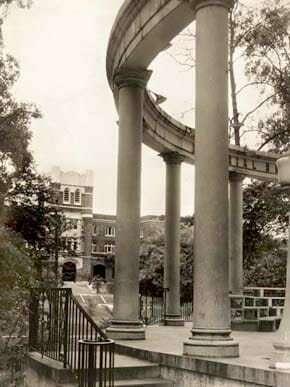 Amphitheater and O’Neal Hall at UNA ca. 1930s
In 1911, the college came under control of the Alabama State Board of Education. President James Knox Powers, who had also served as president from 1887 to 1897, oversaw the introduction of the first librarian on staff, the first college orchestra, and construction of the first women’s dormitory. Henry J. Willingham became president in 1913 and oversaw completion of the dormitory, O’Neal Hall, which was named for Alabama governor and alumna Edward O’Neal. This building was later replaced by the Guillot University Center. The faculty had expanded to 20 members, and the student body reached more than 500. The school expanded steadily between 1914 and 1922. In 1916, the school held its first summer session, and enrollment was so high that male students lived in tents and the number of summer graduates exceeded the number for fall or spring. Two new dormitories were built in 1918 to accommodate the increasing demand for student housing. By 1922, university faculty members were offering extension courses to teachers in surrounding areas, and the new laboratory elementary school, Kilby Training School, was teaching more than 300 students annually.
Amphitheater and O’Neal Hall at UNA ca. 1930s
In 1911, the college came under control of the Alabama State Board of Education. President James Knox Powers, who had also served as president from 1887 to 1897, oversaw the introduction of the first librarian on staff, the first college orchestra, and construction of the first women’s dormitory. Henry J. Willingham became president in 1913 and oversaw completion of the dormitory, O’Neal Hall, which was named for Alabama governor and alumna Edward O’Neal. This building was later replaced by the Guillot University Center. The faculty had expanded to 20 members, and the student body reached more than 500. The school expanded steadily between 1914 and 1922. In 1916, the school held its first summer session, and enrollment was so high that male students lived in tents and the number of summer graduates exceeded the number for fall or spring. Two new dormitories were built in 1918 to accommodate the increasing demand for student housing. By 1922, university faculty members were offering extension courses to teachers in surrounding areas, and the new laboratory elementary school, Kilby Training School, was teaching more than 300 students annually.
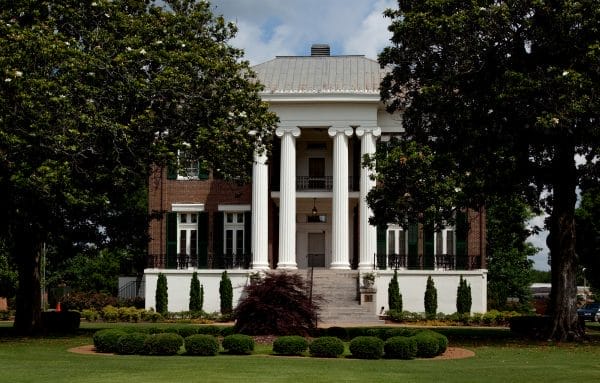 Rogers Hall
In 1929, the school was renamed Florence State Teachers College and subsequently added two new halls (Bibb Graves and Rogers), the Memorial Amphitheater, a library, a gymnasium, two dormitories, and married student housing. The school awarded its first bachelor of science degrees in 1931 and received accreditation by the Southern Association of Colleges and Schools in 1934. In 1949, the Rogers family sold their home, Courtview, to the school; it had formerly been the home of Alabama governor Emmett O’Neal and prior to that the prominent Foster family. The school’s name was shortened in 1957 to Florence State College. The years 1957-1968 saw an expansion in course offerings and the beginning of a massive building overhaul on the school’s campus. New structures included Floyd Science Building, four new halls (Lafayette, LaGrange, Rice, and Rivers), the Student Union Building, an addition to Collier Library, Towers Cafeteria, the Planetarium-Observatory, a new Kilby School building, and a greenhouse. In 1963, Florence State admitted its first African American student, Wendell Wilkie Gunn. Unlike other universities of the time, the admission went relatively smoothly.
Rogers Hall
In 1929, the school was renamed Florence State Teachers College and subsequently added two new halls (Bibb Graves and Rogers), the Memorial Amphitheater, a library, a gymnasium, two dormitories, and married student housing. The school awarded its first bachelor of science degrees in 1931 and received accreditation by the Southern Association of Colleges and Schools in 1934. In 1949, the Rogers family sold their home, Courtview, to the school; it had formerly been the home of Alabama governor Emmett O’Neal and prior to that the prominent Foster family. The school’s name was shortened in 1957 to Florence State College. The years 1957-1968 saw an expansion in course offerings and the beginning of a massive building overhaul on the school’s campus. New structures included Floyd Science Building, four new halls (Lafayette, LaGrange, Rice, and Rivers), the Student Union Building, an addition to Collier Library, Towers Cafeteria, the Planetarium-Observatory, a new Kilby School building, and a greenhouse. In 1963, Florence State admitted its first African American student, Wendell Wilkie Gunn. Unlike other universities of the time, the admission went relatively smoothly.
In 1968, Florence State College changed its name to Florence State University. During this period, the school opened the Lurleen Burns Wallace Fine Arts Center and the Bennett Infirmary. A Greek system was established on campus in 1972, along with the opening of Flowers Hall gymnasium. Robert Miller Guillot became president in 1972 and oversaw the establishment of the School of Nursing the following year. In 1974, the college was renamed the University of North Alabama and rapidly expanded its facilities and instructional capacity. In 1974, Wesleyan and Rogers halls were added to the national register of historic places, and Mary Ella Potts became president pro tempore of the UNA Board of Trustees, the first woman in Alabama to serve in this capacity.
 Floyd Science Building at UNA
Robert L. Potts took the helm as president in 1990 during a period of economic stress and a decline in funding for public education. Despite these struggles, several buildings were renovated during this time, including Coby Hall, Powers Hall, and Braly Municipal Stadium. Potts resigned in 2004 to take a position as chancellor of the North Dakota University System, and William G. Cale, Jr., became president. In 2005, the university’s enrollment surpassed 6,000, the UNA Honors Program was established, and Powers Hall was converted into an international student center. UNA currently has students from more than 40 countries. It is one of the only schools in Alabama to offer a degree in commercial music and one of five schools in the nation to have an accredited industrial hygiene program. The Kilby Laboratory School remains the only university-owned elementary school in the state and offers instruction for students in grades K-6 as well as providing observational and instructional opportunities for UNA faculty and students; it is still located on the campus of UNA.
Floyd Science Building at UNA
Robert L. Potts took the helm as president in 1990 during a period of economic stress and a decline in funding for public education. Despite these struggles, several buildings were renovated during this time, including Coby Hall, Powers Hall, and Braly Municipal Stadium. Potts resigned in 2004 to take a position as chancellor of the North Dakota University System, and William G. Cale, Jr., became president. In 2005, the university’s enrollment surpassed 6,000, the UNA Honors Program was established, and Powers Hall was converted into an international student center. UNA currently has students from more than 40 countries. It is one of the only schools in Alabama to offer a degree in commercial music and one of five schools in the nation to have an accredited industrial hygiene program. The Kilby Laboratory School remains the only university-owned elementary school in the state and offers instruction for students in grades K-6 as well as providing observational and instructional opportunities for UNA faculty and students; it is still located on the campus of UNA.
As of 2009, 7,243 graduate and undergraduate students were enrolled at UNA, and the school employed 322 faculty and staff. The university hosts many yearly events and activities, including the George Lindsey Film Festival, in honor of former alumnus George Lindsey, and the Trumbauer State Secondary Theater Festival.
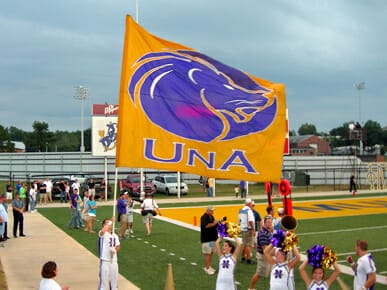 UNA Flag and Football
UNA has a long tradition in athletics. Football and baseball teams were first mentioned in the course catalogue in 1911, with the first football team losing 101-0 to the University of the South in 1912. The school nickname is the Lions, and two live lions, Leo III and Una, reside in state-of-the-art facilities near the main campus entrance. The school colors are gold and purple. UNA teams play in the NCAA Division II subdivision, in the Gulf South Conference. The university currently fields teams in football, baseball, and softball; men’s and women’s basketball, cross country, and tennis; men’s golf; and women’s soccer and volleyball. In 1983, UNA won the Gulf South Conference Championships in football, basketball, and baseball. The football team won three consecutive Division II football championships from 1993 to 1995 and was selected the “Best Division II Team of the Quarter Century” in 1995; the team also became the first Division II football team in the nation to visit the White House. Additionally, the UNA volleyball team became the first Alabama team in history to win the NCAA Division II National Championship in 2003.
UNA Flag and Football
UNA has a long tradition in athletics. Football and baseball teams were first mentioned in the course catalogue in 1911, with the first football team losing 101-0 to the University of the South in 1912. The school nickname is the Lions, and two live lions, Leo III and Una, reside in state-of-the-art facilities near the main campus entrance. The school colors are gold and purple. UNA teams play in the NCAA Division II subdivision, in the Gulf South Conference. The university currently fields teams in football, baseball, and softball; men’s and women’s basketball, cross country, and tennis; men’s golf; and women’s soccer and volleyball. In 1983, UNA won the Gulf South Conference Championships in football, basketball, and baseball. The football team won three consecutive Division II football championships from 1993 to 1995 and was selected the “Best Division II Team of the Quarter Century” in 1995; the team also became the first Division II football team in the nation to visit the White House. Additionally, the UNA volleyball team became the first Alabama team in history to win the NCAA Division II National Championship in 2003.
Further Reading
- McDonald, William Lindsey. Beginnings of the University of North Alabama. Birmingham, Ala.: Birmingham Printing & Publishing, 1991.
- Smith, William E. Jr.. Leo’s Tale: University of North Alabama Trivia. Florence, Ala.: Shoals Heritage, 2000.
